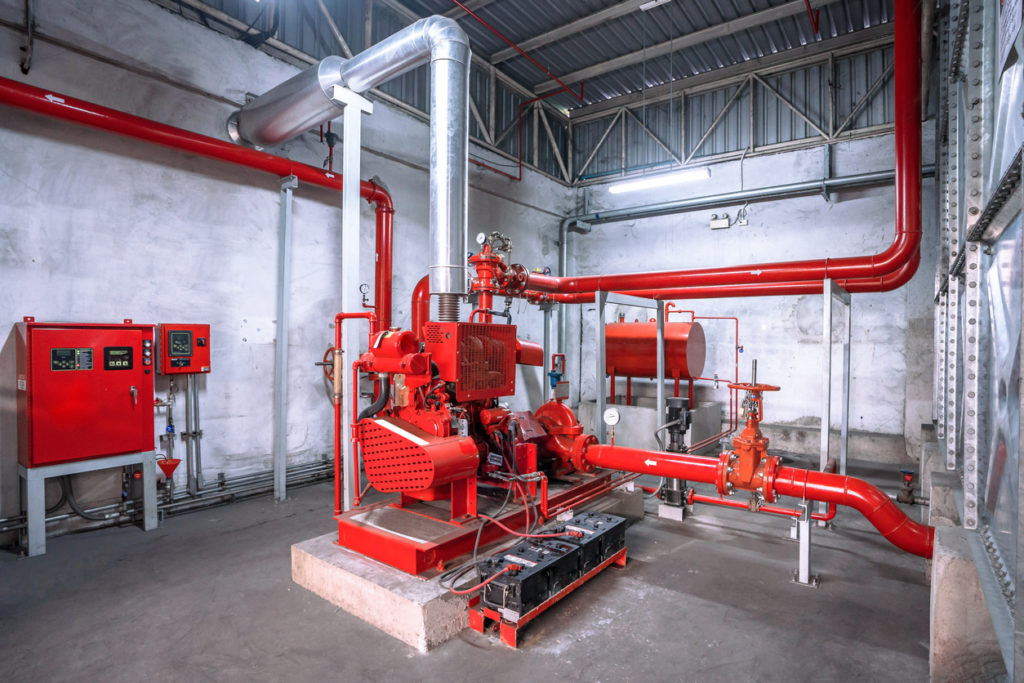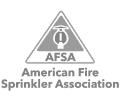Fire Pump Inspection in Texas

Your fire pump is the most important part of your fire sprinkler system (it’s the part that makes the whole system run!). When was the last time you had your fire pump inspection? Since fire pumps are so complex (and so out of the way), they are especially vulnerable to:
- Corrosive environmental hazards
- Accidental tampering
- Damage
- Careless use
As a result, annual fire pump inspection is absolutely essential to ensure that your fire pump will work properly to keep you safe from fires at all times.
To schedule an inspection of your Texas building’s fire pump, contact Kauffman Co. today »
services from Kauffman
Steps of Annual Fire Pump Inspection
At Kauffman Co., our fire pump technicians are licensed to conduct fire pump inspections on commercial buildings to ensure that the system will effectively support your fire sprinkler system in the event of a fire emergency. Our thorough fire pump inspections include:
1. Coupling Pipe Alignment
The first step of a fire pump inspection is making sure the couplings of all the pipes are aligned properly. There are a lot of things that can throw off the coupling alignment (thermal expansion, careless maintenance, etc.).
Misaligned couplings that go unchecked for too long could result in premature failure and possible disruption of service when the pump is going off, so it is extremely important that they are checked during fire pump inspection.
2. Circulation Relief Valve Inspection
The next step of the fire pump inspection process is checking the circulation relief valves. The circulation relief valves prevent the pump from overheating when operating at shutoff conditions, which is very important for weekly fire pump testing (we’ll get to that soon).
This part of the fire pump inspection process is extremely important—if your system overheats during testing, it could cause serious problems if you see an actual fire!
3. Tamper & Flow Switch Test
The next step of a fire pump inspection involves testing the tamper and flow switches. The tamper switches send a signal to the fire alarm monitoring company (if you have one), letting them know if a valve on the fire pump has been closed. This is crucial because it prevents any accidental (or intentional, as the case may be) tampering with your fire pump that could compromise its ability to keep you protected. Flow switches are the parts of your fire pump that start the water flow and trigger the alarms in the event of a fire.
Needless to say, checking out these valves during fire pump inspection is crucial!
The fire pump inspection concludes with a test of the pressures and flow rates that your pump performs at when it’s on. Typically, this involves attaching long hoses to an outside manifold that measures the flow of water (and the water pressure) when the pump is turned on.
Depending on the size of your building and the size of your fire pump, there can be an incredible amount of water kicked out onto your front lawn or street area. Our technicians have years of experience conducting fire pump inspections and will ensure that these cause minimal disruption to your Houston area property.
Schedule your fire pump test with Kauffman Co. today »
services from Kauffman
Weekly Fire Pump Testing for Your Texas Property
To ensure that nothing happens between your fire pump inspections, you should run a weekly fire pump test at shutoff conditions (without water flowing through your sprinkler heads). These are fairly easy to do: call Kauffman Co. and tell us you’re going to run a fire pump test. Then, run your fire pump for 10 minutes. If all goes well, you’re good for another week. If not, let us know and we’ll come out and fix the problem.
Schedule Fire Pump Inspection in Houston, TX
If you need to schedule a fire pump inspection in Houston, Texas, call Kauffman Co. today! We’ll check all the components of your fire pump and make sure you’ll always be protected if a fire strikes.















